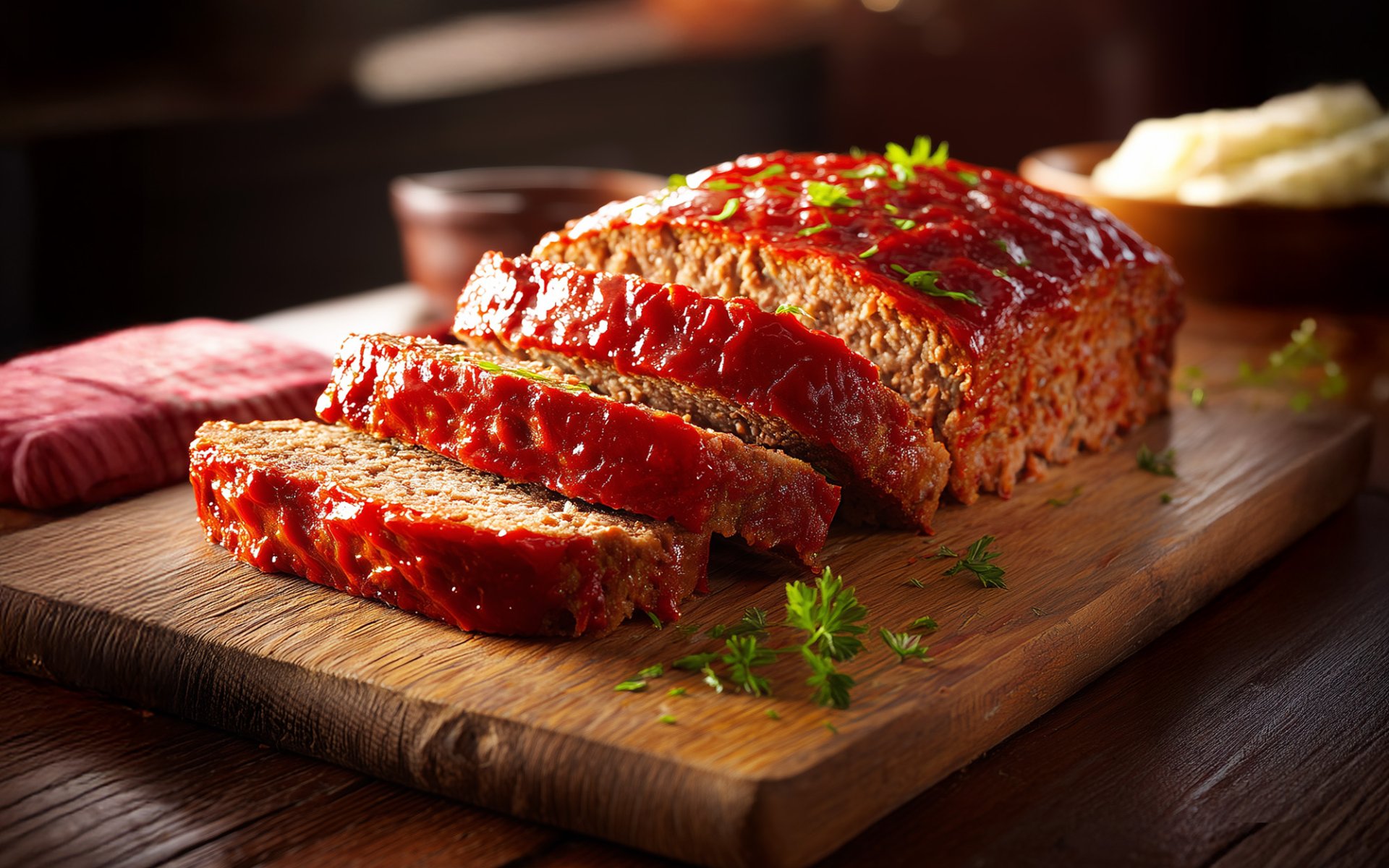Meatloaf
Last updated: 14 Oct 2025

Meatloaf is a dish made from ground meat mixed with breadcrumbs, eggs, pepper, and onions, shaped into a loaf and baked until fully cooked. It is typically sliced and served with tomato sauce on top.
However, these early Roman recipes were not large loaves like the modern Meatloaf, but rather smaller versions served as part of elaborate meals.
People used inexpensive cuts of meat or scraps, blending them with affordable ingredients like breadcrumbs, eggs, onions, and spices to create a hearty meal large enough to feed the entire family.
Ancient Roman Origins of Meatloaf
The origins of Meatloaf can be traced back to ancient Rome, where a similar recipe was recorded in De Re Coquinaria (The Art of Cooking), written by Marcus Gavius Apicius, a renowned Roman gastronome. The recipe described a mixture of finely minced meat combined with bread, wine, herbs, and spices, then carefully molded into small loaves.However, these early Roman recipes were not large loaves like the modern Meatloaf, but rather smaller versions served as part of elaborate meals.
Meat Dishes in the European Middle Ages
During the European Middle Ages, dishes made from minced or leftover meat became popular. People would reuse scraps of meat from previous meals, mixing them with breadcrumbs or spices to create new, flavorful dishes a practical way to reduce waste and make the most of available ingredients.The Birth of Modern Meatloaf in the United States
Although the concept of minced meat mixed with fillers dates back centuries, the modern Meatloaf as we know it today originated in the United States in the late 1870s. Early American recipes called for any kind of ground meat (usually beef), seasoned with salt, pepper, onion, eggs, and breadcrumbs, then shaped into a loaf and baked often topped with tomato sauce.Meatloaf During the Great Depression
During the Great Depression (19291941), Meatloaf became a staple in American households. With the stock market crash, widespread unemployment, and drought-stricken farmlands, families had to find inexpensive ways to stretch their food supplies. Meatloaf was the perfect solution economical, filling, and adaptable.People used inexpensive cuts of meat or scraps, blending them with affordable ingredients like breadcrumbs, eggs, onions, and spices to create a hearty meal large enough to feed the entire family.
Meatloafs Role in World War II
After the Depression, Meatloaf remained an essential part of American home cooking, especially during World War II, when the government implemented rationing on meat, flour, and dairy products. Meatloaf allowed families to use smaller portions of meat while still providing satisfying, protein-rich meals.Post-War Evolution and Variations
Following the war, as rationing ended and ingredients became more available, Meatloaf evolved into a versatile comfort food. Recipes diversified to include different meats beef, pork, chicken, lamb, veal, or even venison along with vegetables, nuts, or beans for added texture and flavor.Key Ingredients and Baking Style
The essential components of Meatloaf remain consistent: ground meat, breadcrumbs, eggs, and seasoning (salt, pepper, garlic, and herbs). It is traditionally baked in a rectangular loaf pan giving it its signature loaf shape and topped with tomato sauce or glaze, either before or after baking, to keep it moist and flavorful.Meatloaf in the Modern Era
Today, in the 21st century, Meatloaf continues to be a beloved classic around the world, especially in the United States and Europe. It has evolved to meet modern dietary preferences, with variations such as vegetarian, vegan, and low-fat versions gaining popularity. Tags :
Related Content
Getting to Know Pigs in Blankets One of the Most Popular Christmas Dishes in the United Kingdom
Tracing the History of Cranberry Sauce A Dish of Great Significance for Thanksgiving


